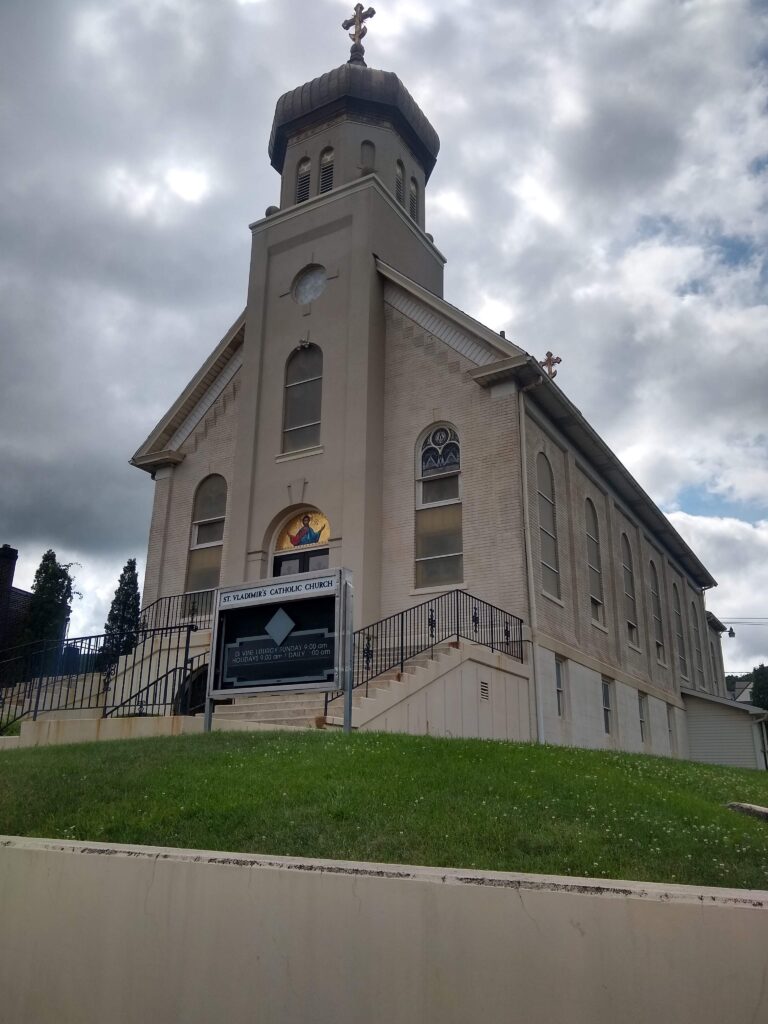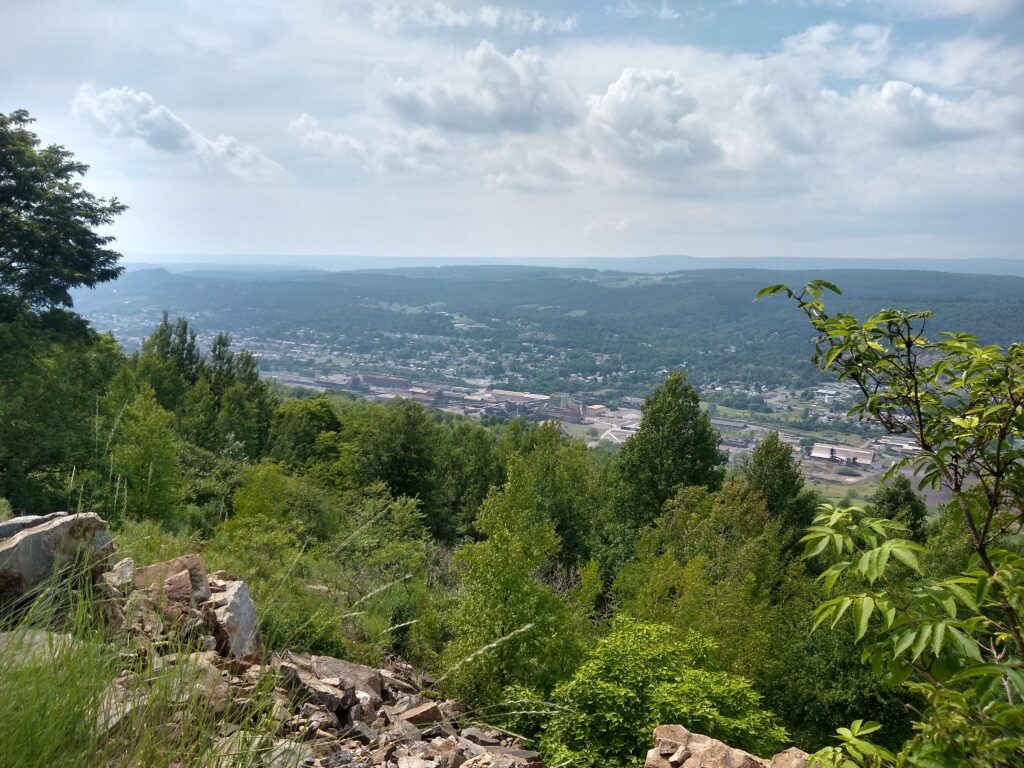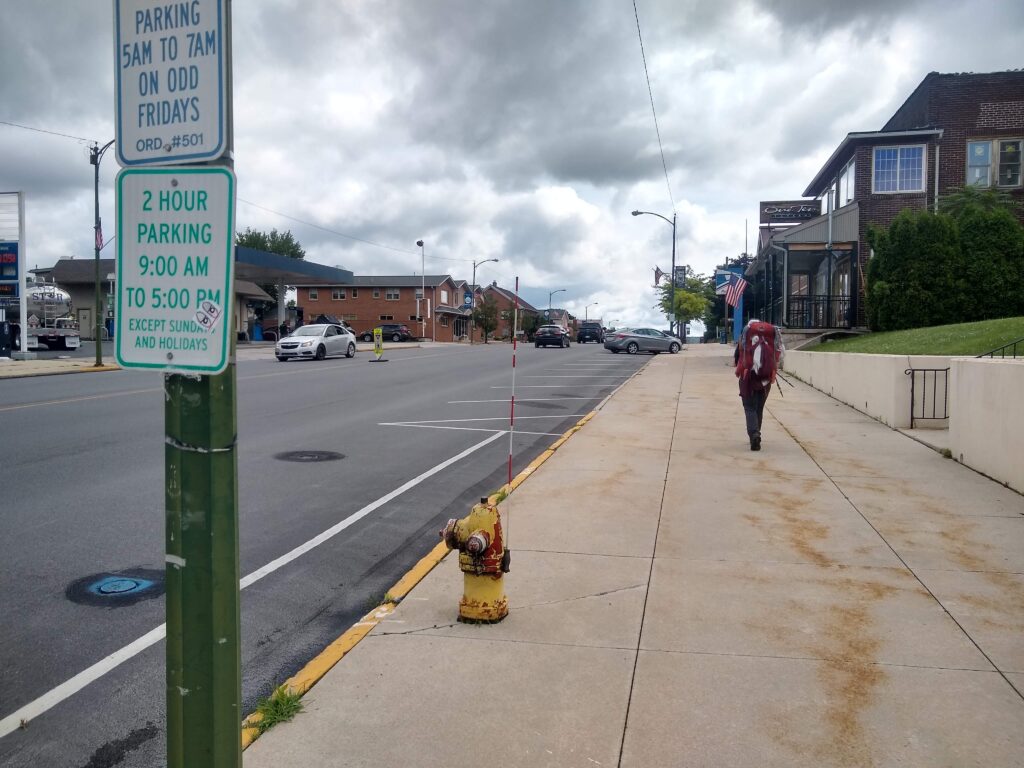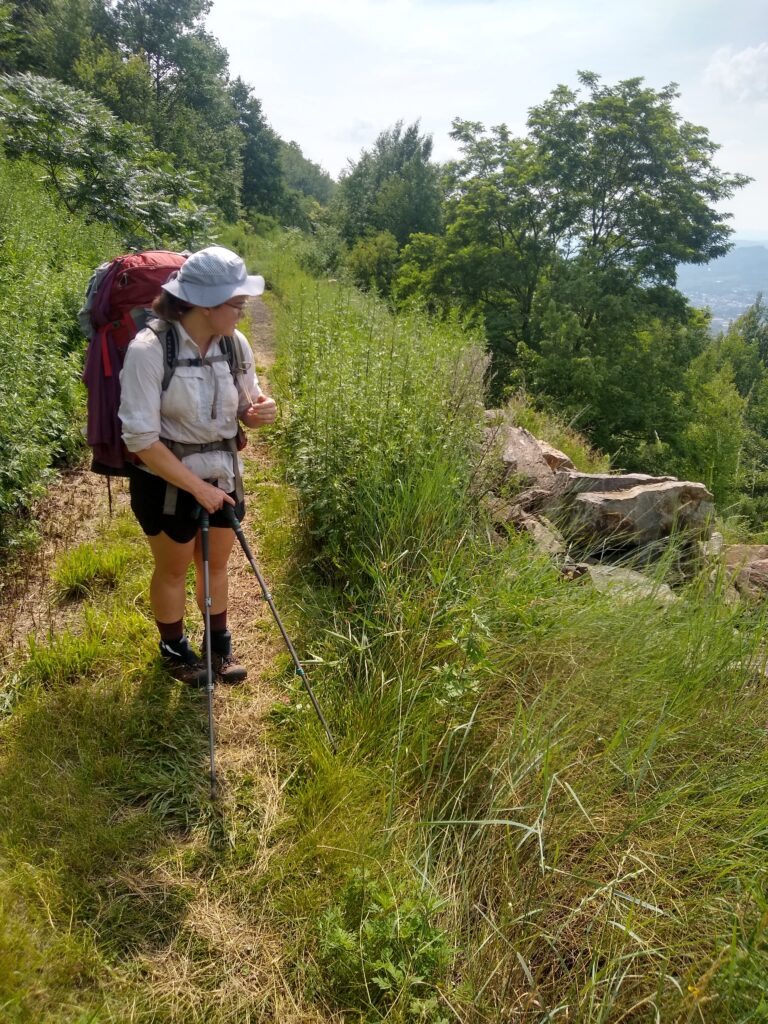- 7/9: Miles 1259.5-1272.1 (12.6 mi.)
- Total ascent: 2412′; descent: 1294′
- 7/10: Miles 1272.1-1282.5 (10.4 mi.)
- Total ascent: 1802′; descent: 2004′
Something I’ve been thinking about recently is how tightly place is tied to identity. Narratives about the same place may be both true and in tension with each other.
Take Palmerton, where we resupplied yesterday. Two narratives can still be seen and heard around town: The first is that a New Jersey company gave middle-class lives to thousands of working Americans. The second is that a few opportunistic out-of-staters got rich ruining the health of thousands of Americans. Palmertonians still have elevated levels of heavy metals in their air, soil, water supply, and blood 40 years after the cleanup began.
These paradoxical narratives pop out everywhere once one begins to see them. In North Carolina, did hardscrabble subsistence farmers defend themselves from native American attacks, or did greedy European settlers take land by force from those who’d cultivated it for generations?
This is obvious, too, on war memorials. At one park in Maryland, monuments to slain Confederate and Union generals told the same story — except with the hero and villain roles reversed.
When people can’t identify with someone else’s place, they struggle to connect in other ways as well. I think it is no surprise that the partisan rancor as worsened as one America has lost grocery stores, hospitals, and clean drinking water, while the other builds smart cities and juice bars. The stories people in those two Americas tell sound an awful lot like the dueling narratives of Palmerton.
The good news is, Palmerton is getting better. The 33 million tons of zinc smelting waste are now partially covered by vegetation. Water flows have been diverted around it to reduce the metals seeping into the groundwater. The town’s drinking water is once again within the EPA’s “acceptable” range for metals contamination, and the town has been modestly successful in bringing tourists (hikers, but tourists nonetheless).
Although the well water is safe to drink, the spring water within about 20 miles of the Superfund site is not. Only this afternoon did we get north of Wind Gap, where it’s said to be safe to collect water again — not that we’ve seen any water.
At Wind Gap, we begged a woman having a yard sale to let us fill up our water bottles from her garden hose. We each bought a Coke and a bag of chips from her to communicate our appreciation.
For water at the beginning of the day — we didn’t make it the full 15 miles that we needed to the prior day — we were forced to go off-trail into the next valley, a precipitous 0.6 miles each way to collect from a spring encircled by poison ivy.
Poison ivy is just one of the recent hardships to befall my legs: Trying to beat a storm so as to avoid setting up our tent in the rain, I tripped and knocked a knee yesterday. Around noon today, I was chased and stung six times on the calves by yellow jackets (thus why I usually hike in pants, even in the heat of summer).
Nursing my wounds, I allowed myself an on-trail beer this afternoon, offered by a couple that is slackpacking themselves via a pickup truck. We met Ella, a tattooed Californian about a mile before the road crossing at which her Alabamian, PWC-consultant husband, Andrew, was parked and waiting. They seemed more eager to talk than hike, which suited my legs just fine.
We bitched about the rocks, watched a video of a domestic dispute between two porcupines, and then bitched about the yellow jackets. It felt good to complain, for once.
Tomorrow, we ought to be over the hump of the rocks, according to a Ridgerunner we met just after I fell yesterday. And, in another 15 miles, we’ll be out of Pennsylvania altogether and onto what we hear are the soft, spring-studded trails of New Jersey.



